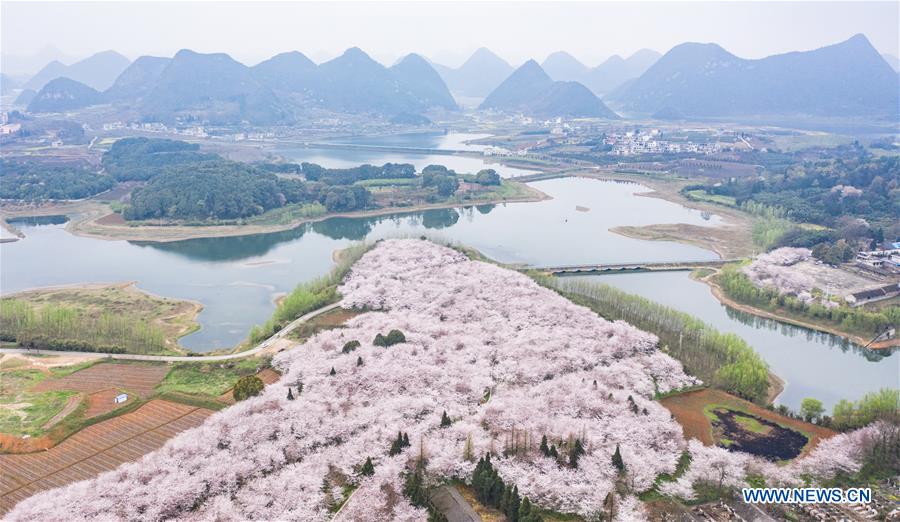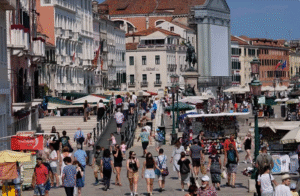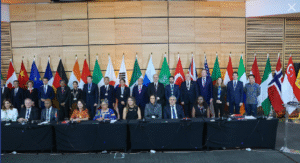China : Tourism picks up , 4000 tourist sites reopened

Beijing ( Xinhua) : As the novel coronavirus outbreak in China becomes more subdued, the country is trying to get tourism back on its feet, with more scenic attractions and museums reopening and travel restrictions being loosened.
The National Health Commission received reports of 34 new confirmed COVID-19 cases on the Chinese mainland Wednesday ( March 18 ) , all of which were imported cases. No new domestically transmitted cases were reported.
A total of eight museums including Shenyang Palace Museum, the imperial palace of several Qing Dynasty (1644-1911) emperors, reopened to the public on Tuesday in Shenyang, capital of northeast China’s Liaoning Province, after months of being shutdown.
However, with the threat of cross-infection still a danger, visitors must have their temperature checked on arrival, maintain a distance of no less than 1.5 meters among each other in queues and wear masks during their stay.
The museum authorities also took measures including requiring real-time reservations, controlling visitor numbers and limiting opening hours to avoid overcrowding. Daily visitor numbers have been capped at 4,000 for the Shenyang Palace Museum.
In northwest China’s Xinjiang Uygur Autonomous Region, more than 100 tourist spots have resumed normal operation. Many ski resorts exempted or halved the entrance fees to attract visitors.
“The tourists coded green can make reservations online and enjoy free skiing if they live in certain hotels,” said Liang Jing, manager of Jiangjunshan ski resort. Many provincial-level regions have introduced a health code monitoring system to control people’s movements.
Liang said the resort is temporarily not open to tourists who came from the virus-hit areas or returned from abroad over the previous two weeks.
The majority of Shanghai’s top-graded tourist attractions and all of its libraries have resumed business as of Wednesday. In early March, Shanghai Disney Resort partially resumed operations, with each of the reopened resort locations running under limited capacity and reduced hours of operation.
Ningxia Hui Autonomous Region issued a guideline allowing package tour businesses between low-risk cities and counties within the region to return to normal and outdoor cultural venues including tourist attractions and stadiums to reopen, while indoor theaters, ballrooms and internet bars must remain shuttered.
As the epidemic control situation is improving in China, a total of 3,714 tourist sites in 28 provinces, autonomous regions and municipalities on the Chinese mainland had reopened as of Monday, accounting for over 30 percent of the total. In addition, over 180 museums had reopened as of Sunday, according to the Ministry of Culture and Tourism.
Tourism is among the industries hit hardest by the unexpected epidemic. The China Tourism Academy estimated that domestic visits will see a reduction of 932 million in 2020 while the number will plummet in the first quarter — a negative growth of 56 percent compared with that in 2019. Tourism-driven revenues will drop by 1.18 trillion yuan (about 166 billion U.S. dollars) this year.
Known for its picturesque karst mountains and beautiful rivers, Yangshuo County in southern China Wednesday launched six measures to help local tourism pick up, such as exempting or reducing rent for tourism enterprises, providing subsidies for reopened tourist sites and cutting tax and fees for small and medium-sized firms.
Shanghai has provided financial aid for culture and tourism industries hit by the outbreak, including refunding deposits for travel agencies, allocating special funds for cultural and tourism development and providing aid for loans.
Companies and individuals in the tourism sector also took measures to save themselves. Livestreaming platforms and travel agencies have teamed up with tourist sites to make online sightseeing more accessible.
China’s largest online travel agency Trip.com in March launched presell products including more than 1,000 travel routes and tickets to over 300 tourist attractions. It also started a revival plan involving 1 billion yuan for the tourism industry with its partners from home and abroad.
Xu Zihui, owner of a homestay near Huangshan Mountain, a UNESCO world heritage site in eastern China’s Anhui Province, allowed customers to book rooms for a period before June next year with discounted price. She has received over 100 orders so far.
Industry experts said domestic tourism will take the lead in recovering despite the fact that the epidemic has not ended and the global tourism market is reeling from the coronavirus shock.
Dai Bin, president of China Tourism Academy, said the general management and emergency capacity of China’s tourism sector have been better enhanced during the epidemic prevention and control.
“The cultural and tourism industry is trying to take the chance of the upcoming holidays with preferential policies. Travelers will be gradually coming back, and the tourism market in China will usher in a new phase of development when the epidemic is over,” said Jin Jianping, deputy general manager of Liaoning Tourism Investment Group.
March 19 , 2020
Photo : Aerial photo shows the scenery of cherry blossoms in Guian New District, southwest China’s Guizhou Province. -Xinhua/Tao Liang














